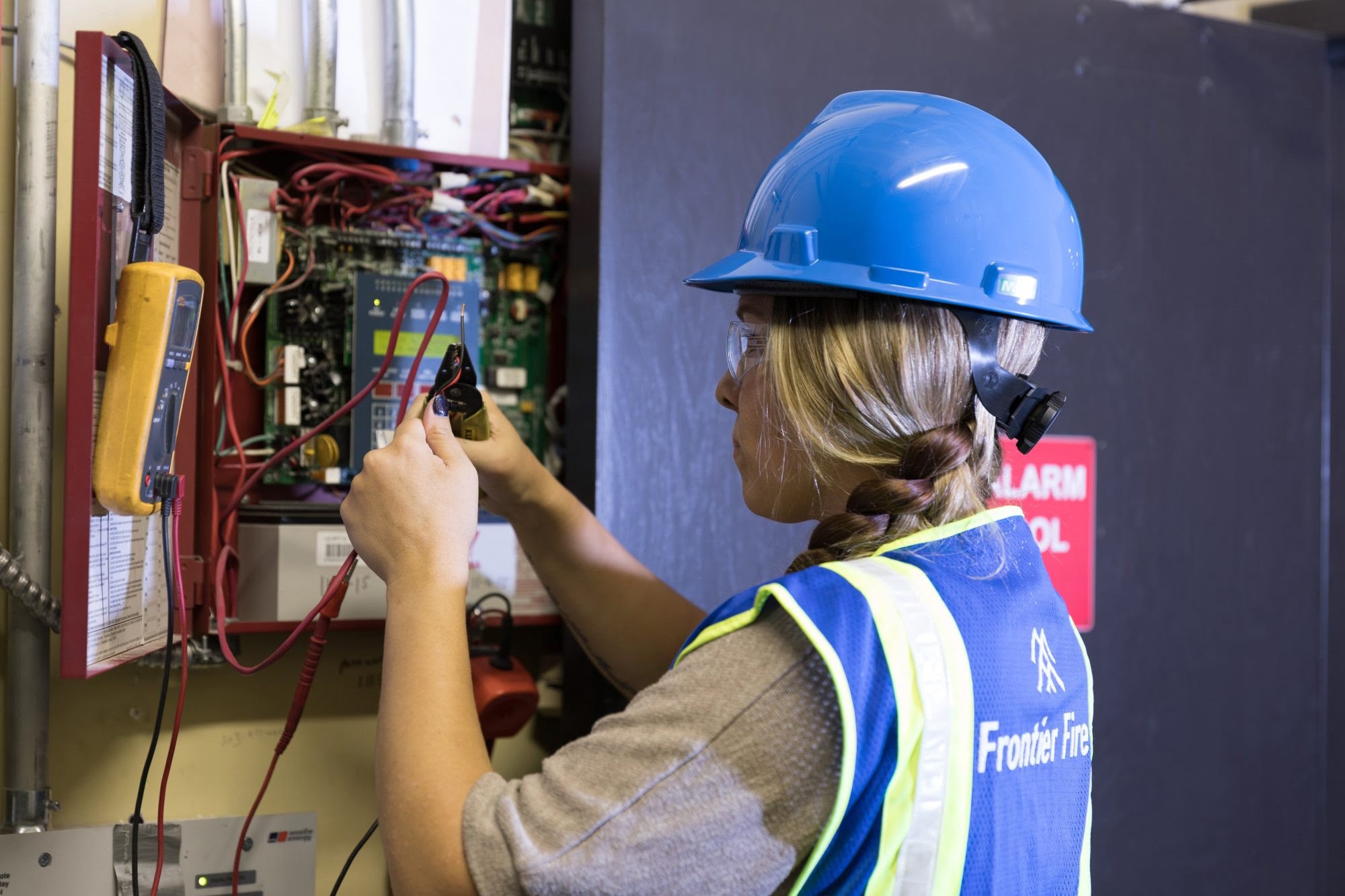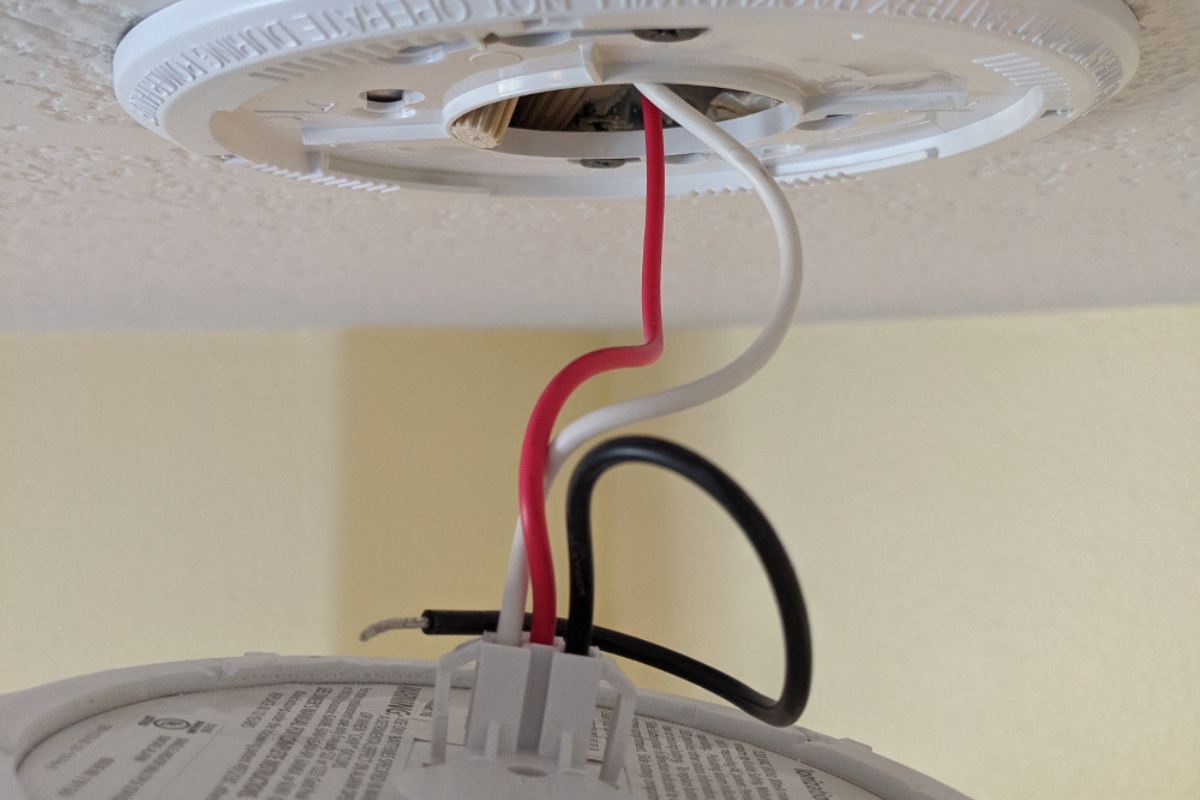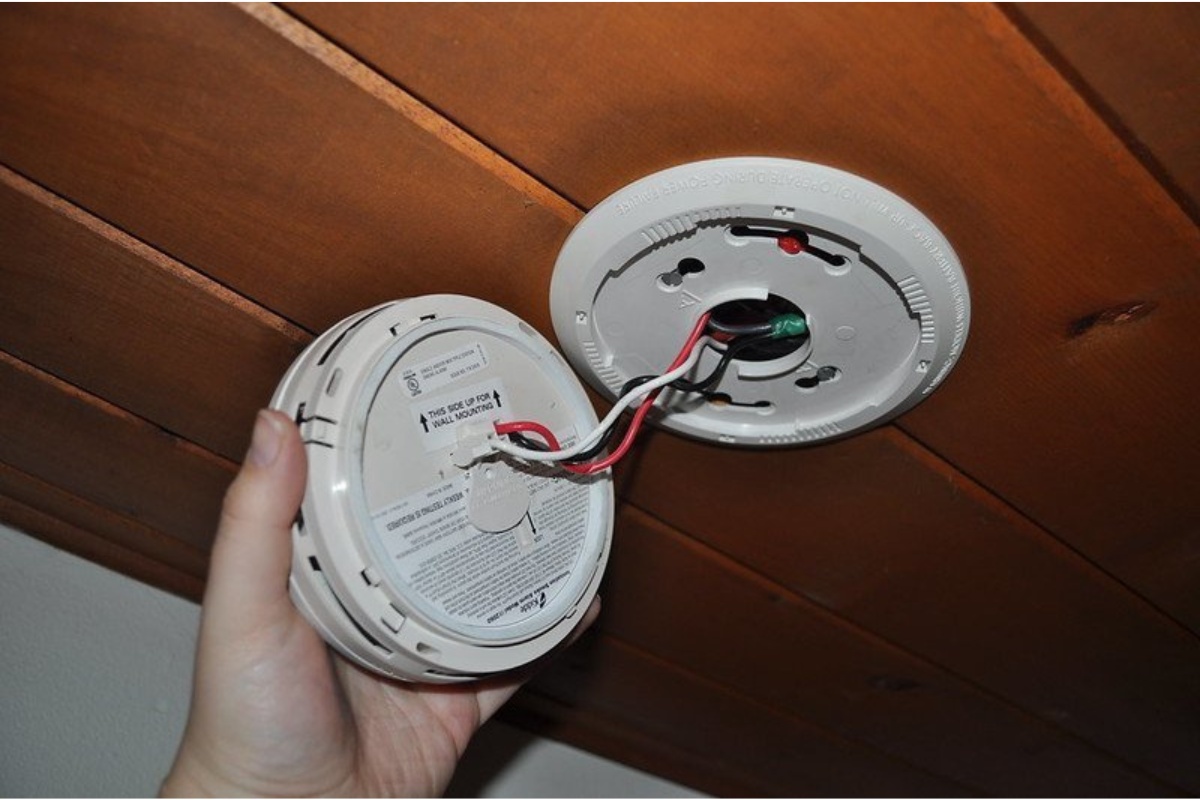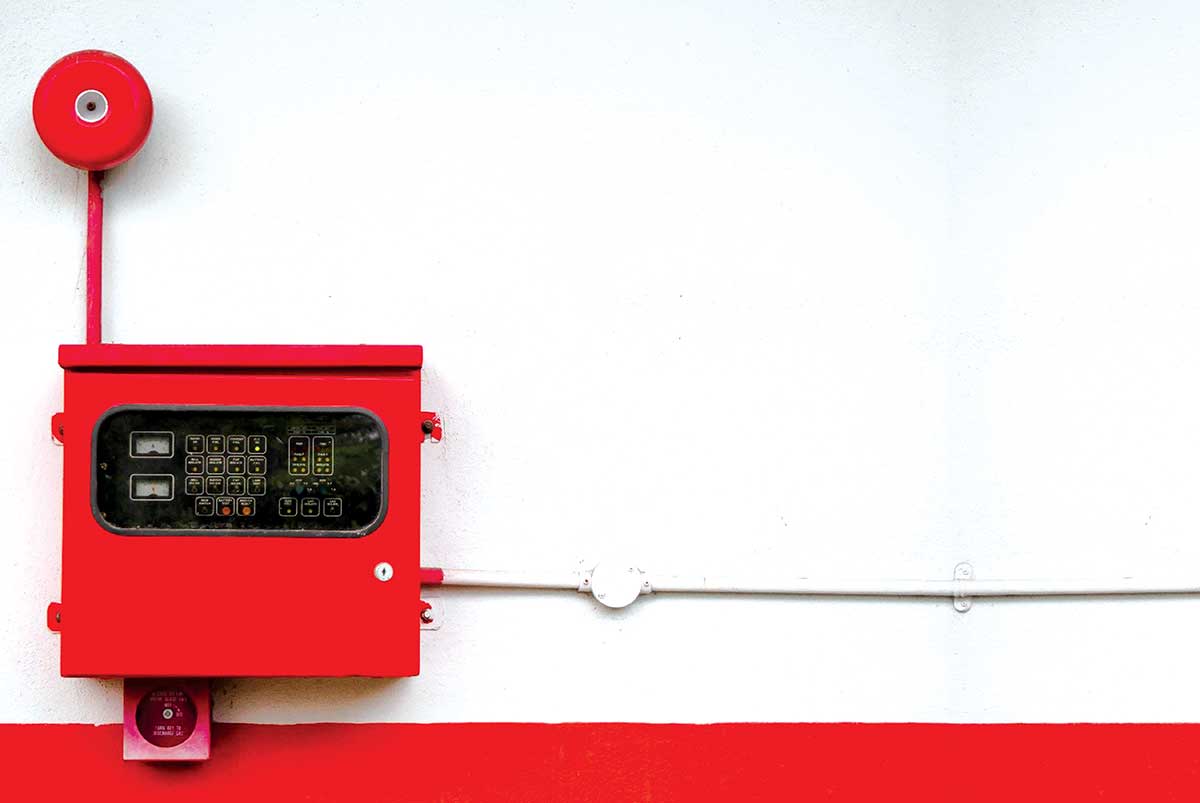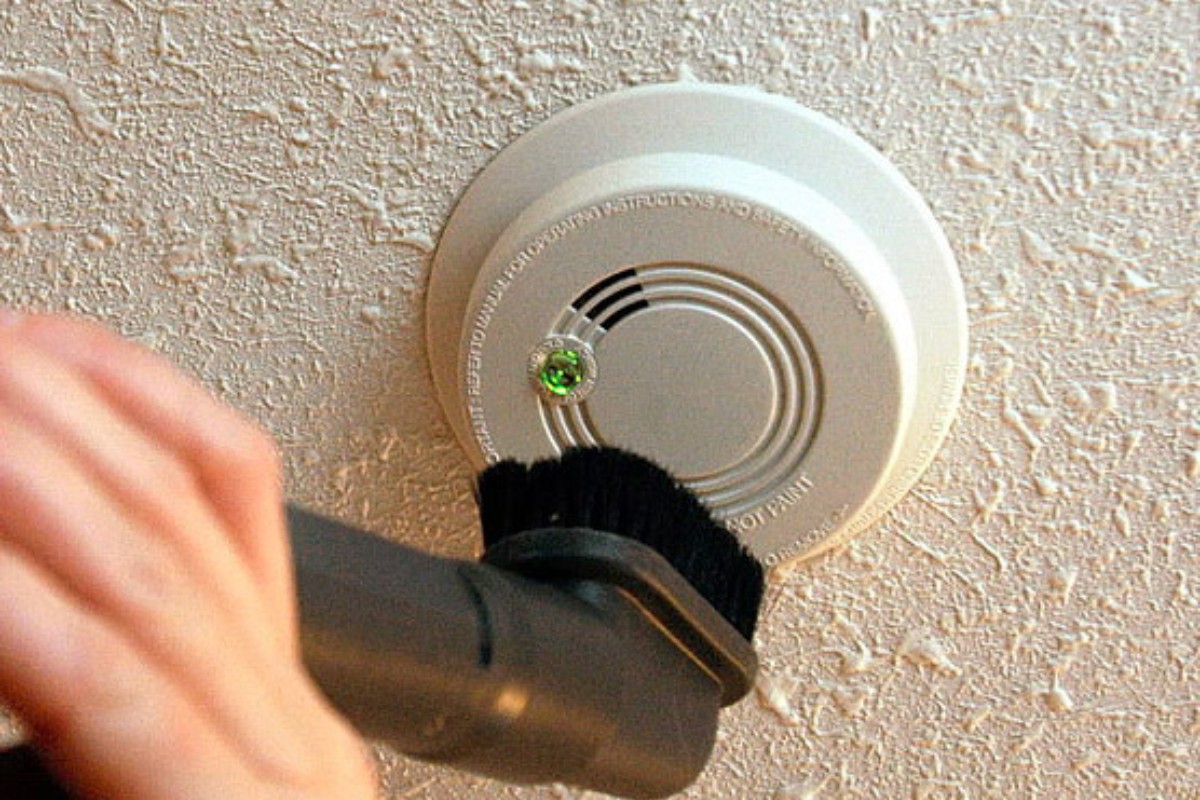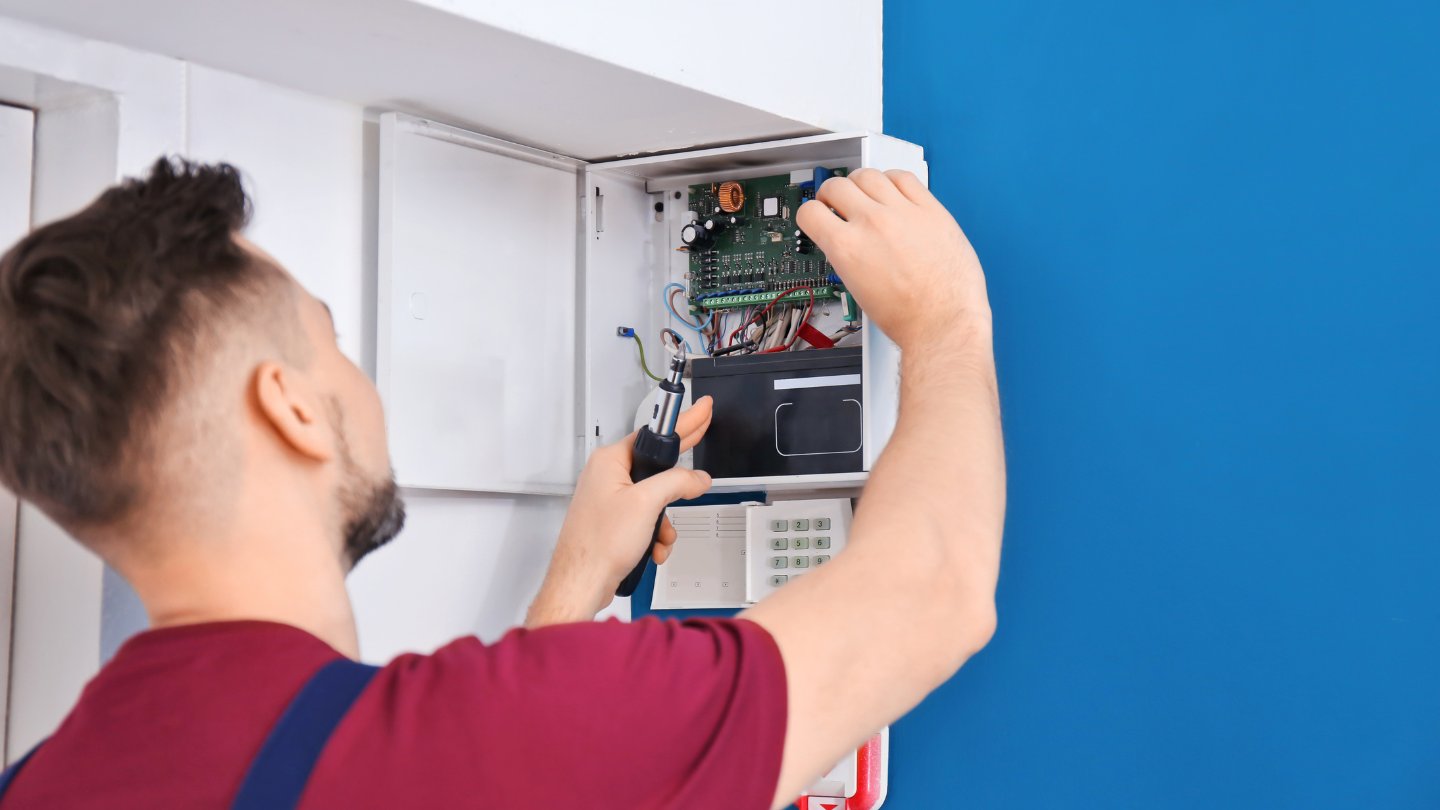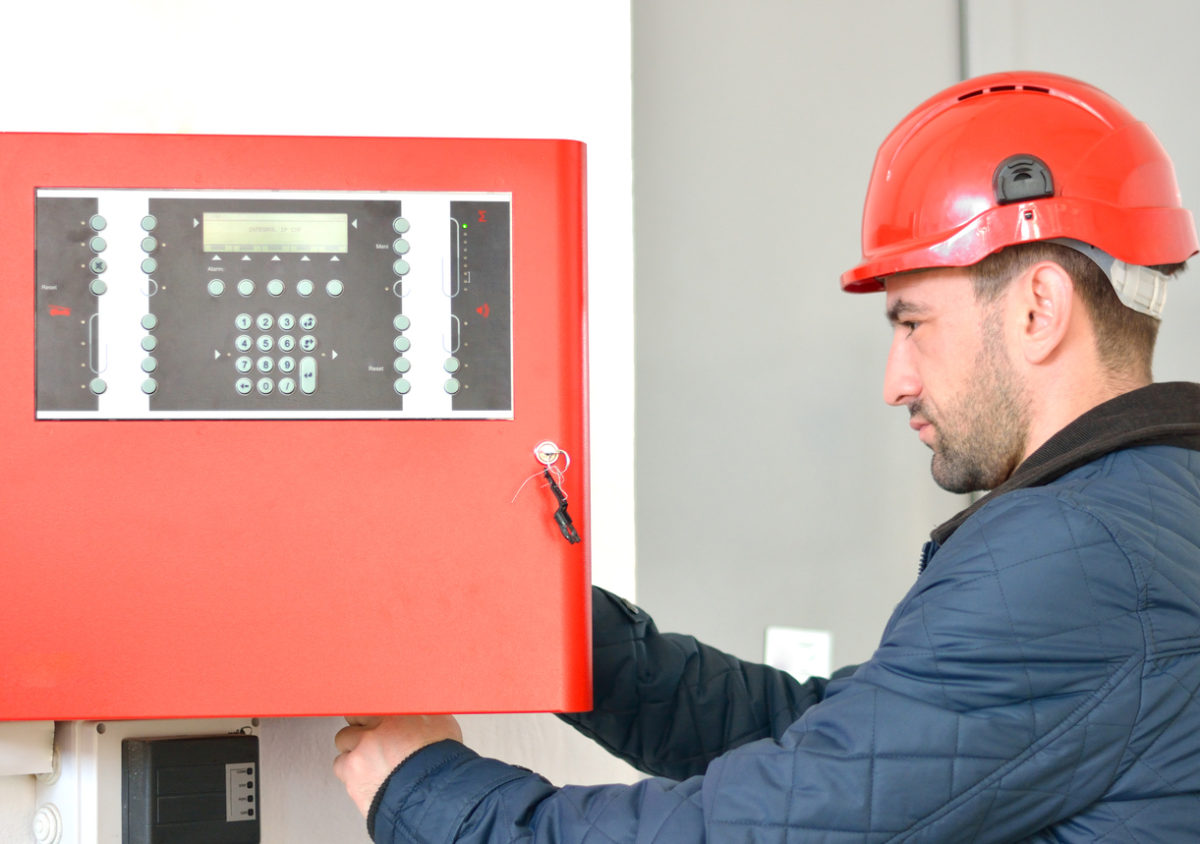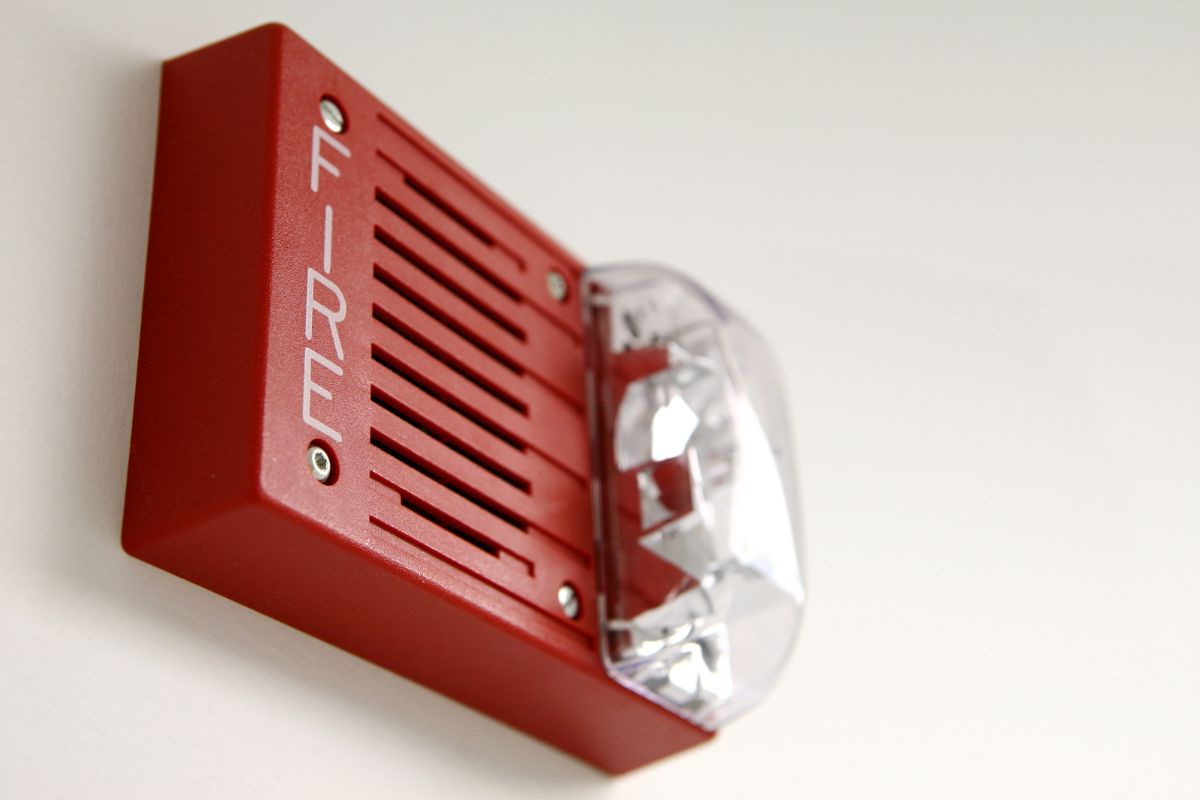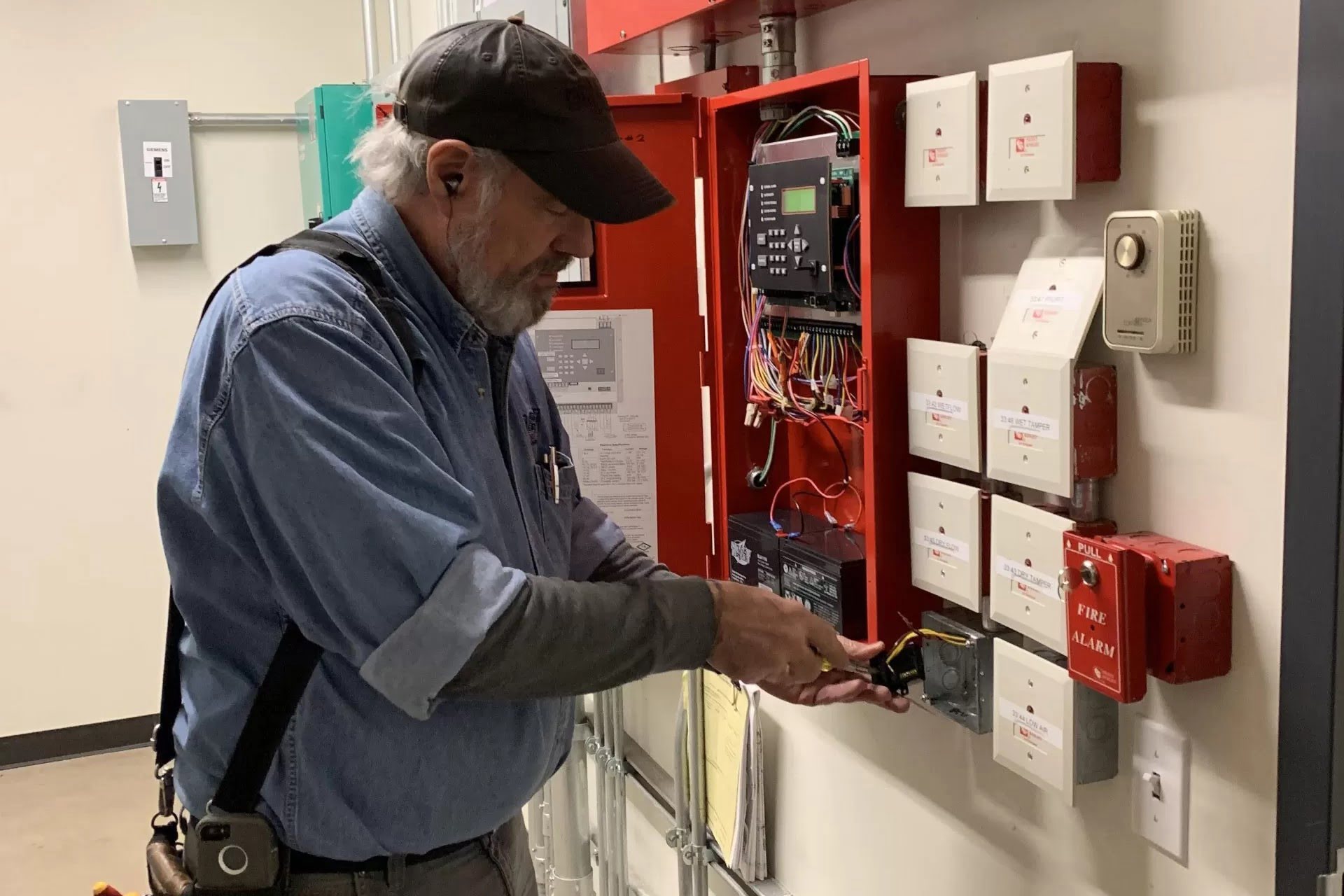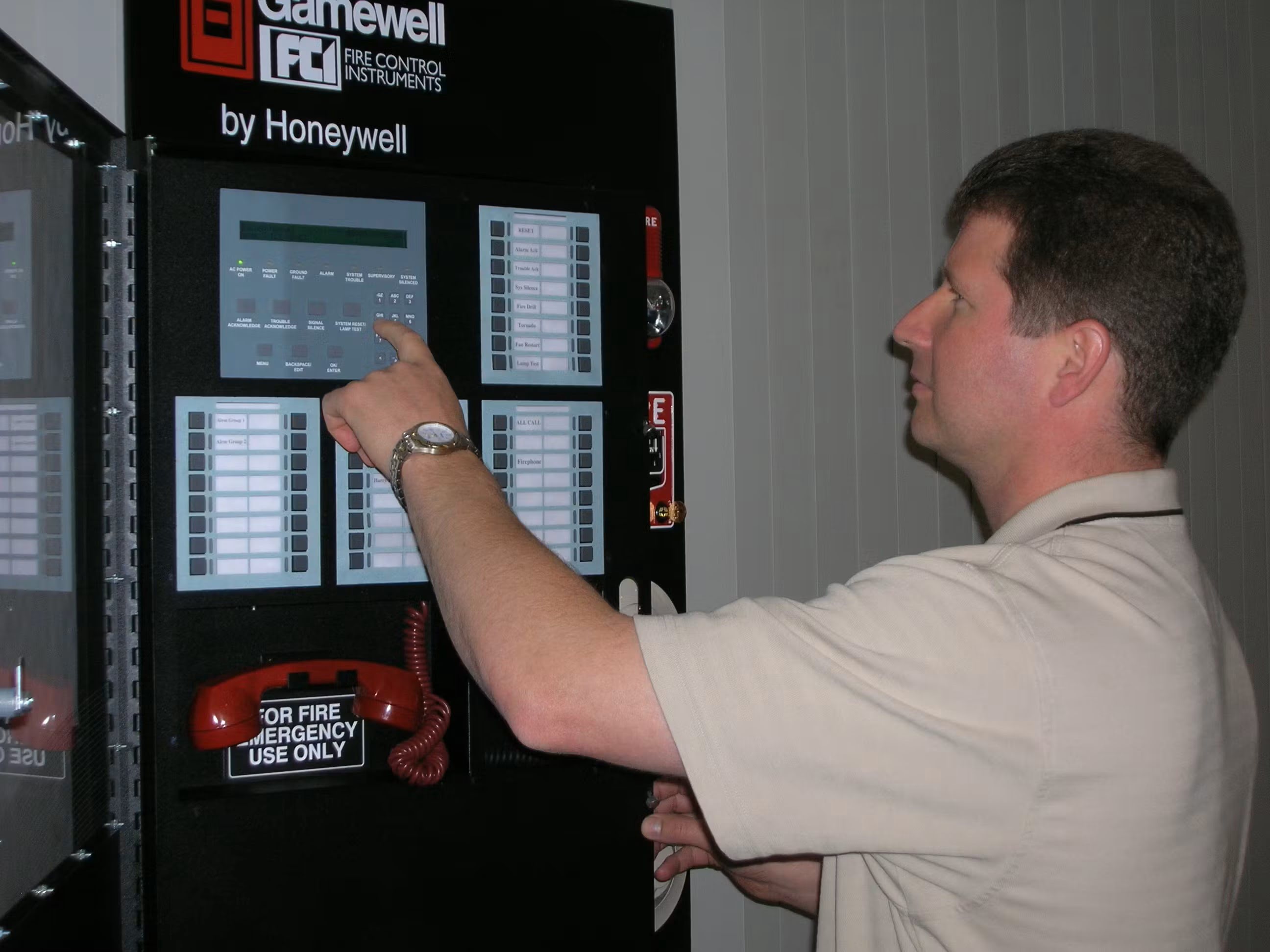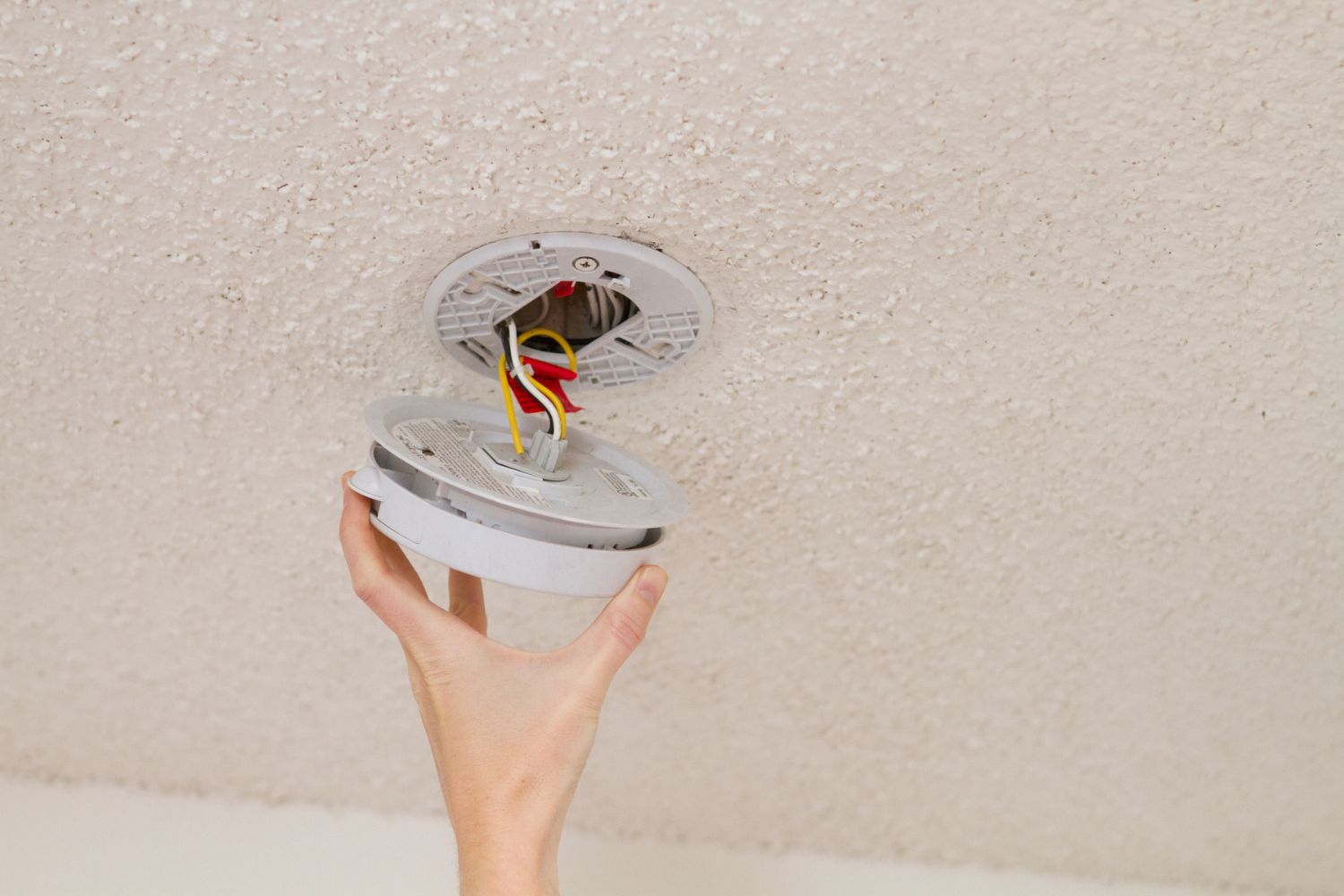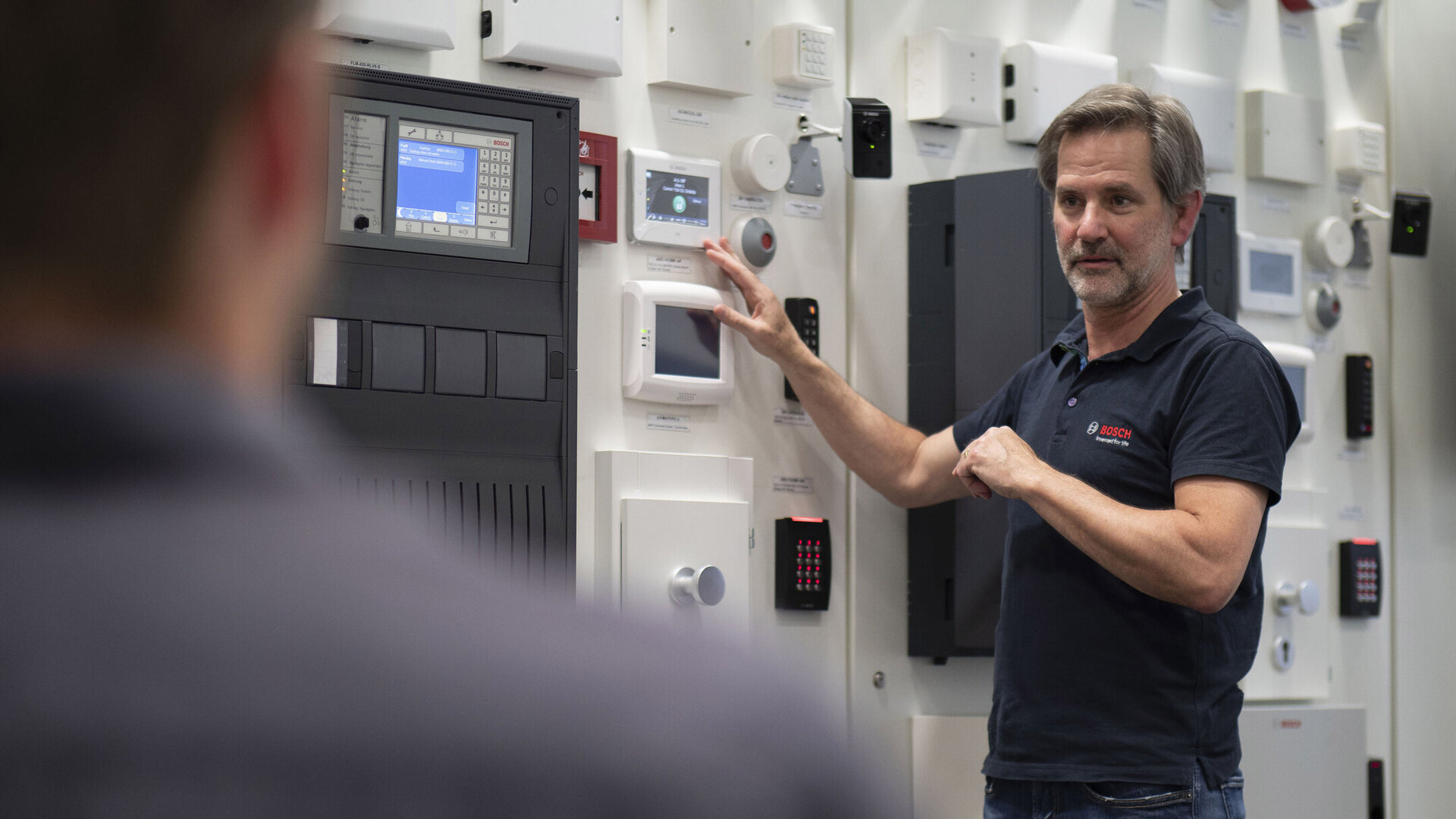Home>Home Security and Surveillance>How Hard-Wired Fire Alarm Systems Work
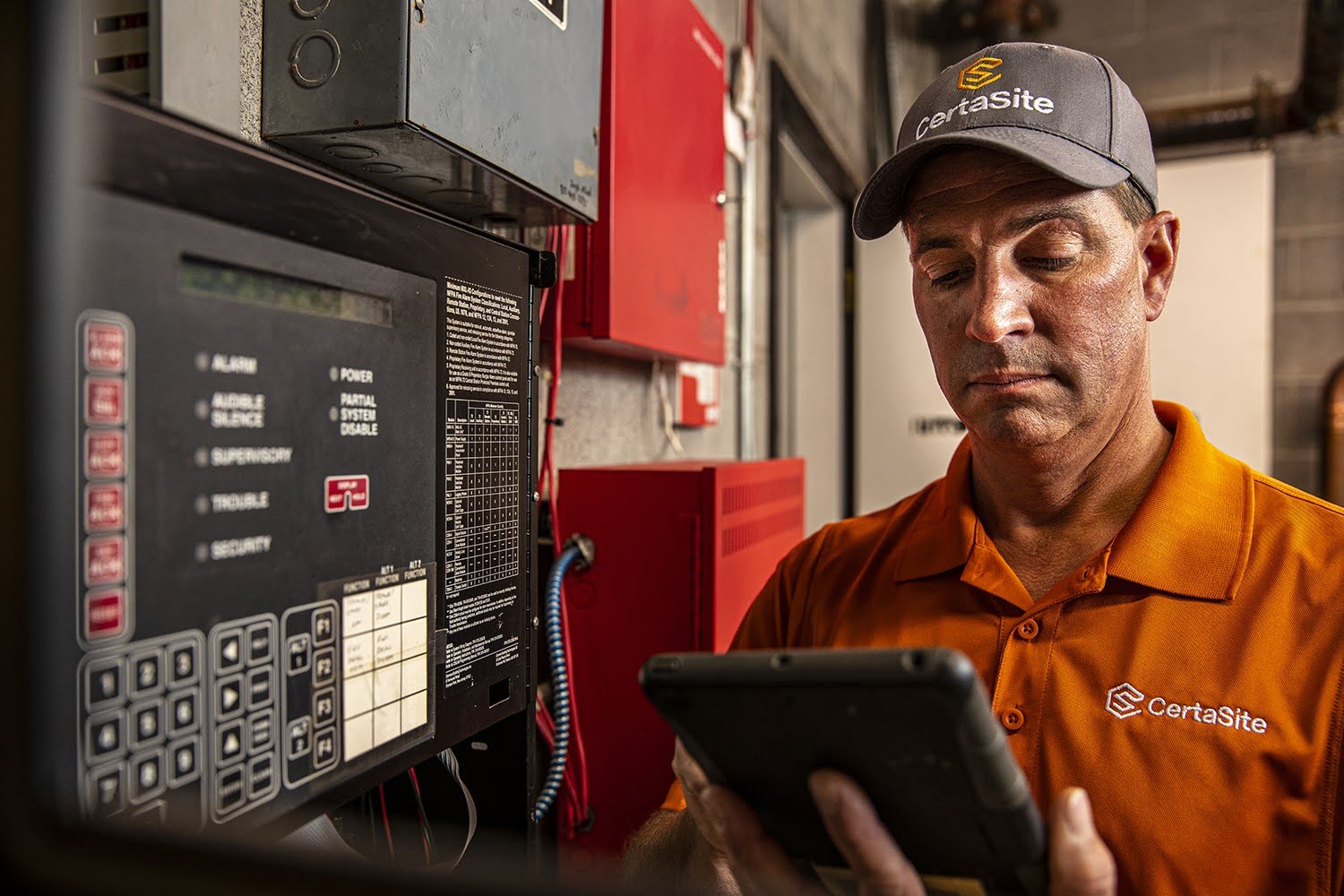

Home Security and Surveillance
How Hard-Wired Fire Alarm Systems Work
Modified: March 6, 2024
Learn how hard-wired fire alarm systems work and enhance your home security and surveillance. Get insights on installation, functionality, and benefits.
(Many of the links in this article redirect to a specific reviewed product. Your purchase of these products through affiliate links helps to generate commission for Storables.com, at no extra cost. Learn more)
Introduction
Welcome to the world of home security and surveillance! In a rapidly evolving digital era, protecting our homes and loved ones has become a top priority. One of the key components of a comprehensive home security system is a hard-wired fire alarm system. These systems are designed to detect the presence of smoke or heat, alerting occupants of a potential fire and allowing them to take necessary action.
In this article, we will dive deep into the inner workings of hard-wired fire alarm systems. We will explore the various components that make up these systems and discuss how they function to provide effective fire detection and alert capabilities. Whether you are considering installing a fire alarm system in your home or simply looking to expand your knowledge in the field of home security, this article will provide you with valuable insights.
So, grab a cup of coffee, sit back, and let’s unravel the mysteries of hard-wired fire alarm systems together!
Key Takeaways:
- Hard-wired fire alarm systems use smoke detectors, heat detectors, and manual pull stations to detect fires and alert occupants through alarms and strobe lights, ensuring prompt evacuation during emergencies.
- While hard-wired fire alarm systems offer reliability and wide coverage, they may have limitations in installation complexity, vulnerability to power outages, and flexibility, requiring careful consideration for building safety.
Read more: How Do Fire Alarm Systems Work
Components of Hard-Wired Fire Alarm Systems
Hard-wired fire alarm systems consist of several key components that work together to detect fires and alert occupants. Let’s take a closer look at each of these components:
- Smoke Detectors: Smoke detectors are the primary sensors used in fire alarm systems. They continuously monitor the air for the presence of smoke particles. When smoke is detected, the smoke detector triggers an alarm to alert occupants of a potential fire. There are two main types of smoke detectors: ionization detectors, which are more sensitive to flaming fires, and photoelectric detectors, which are better at detecting smoldering fires.
- Heat Detectors: Heat detectors are another important component of hard-wired fire alarm systems. Unlike smoke detectors, they don’t rely on detecting smoke particles. Instead, they monitor changes in temperature. When the ambient temperature rises rapidly or exceeds a certain threshold, the heat detector triggers an alarm. Heat detectors are particularly useful in areas where the presence of smoke is expected, such as kitchens or garages.
- Manual Pull Stations: Manual pull stations are devices that allow occupants to manually activate the fire alarm system in case of an emergency. They are typically installed near exits or in easily accessible areas. When a person pulls the lever or breaks the glass cover, it triggers an immediate alarm, alerting everyone in the vicinity to evacuate the premises.
- Control Panel: The control panel is the central hub of the fire alarm system. It receives signals from the smoke detectors, heat detectors, and manual pull stations, and processes the information to determine if there is a fire. If a fire is detected, the control panel activates the notification devices, such as alarms and strobe lights, to warn occupants.
- Notification Devices: Notification devices are responsible for alerting occupants when a fire is detected. These devices can include loud sirens, flashing strobe lights, and even voice announcements. They are strategically placed throughout the building to ensure that the alarm is heard or seen by everyone, even in noisy or visually impaired situations.
These components work in harmony to detect fires and quickly alert occupants, giving them the precious time needed to evacuate safely. In the next section, we will explore how these hard-wired fire alarm systems function in detail.
Smoke Detectors
Smoke detectors are vital components of hard-wired fire alarm systems. They are designed to detect the presence of smoke particles in the air, indicating a potential fire. There are two main types of smoke detectors: ionization detectors and photoelectric detectors.
Ionization Detectors: Ionization smoke detectors use a small amount of radioactive material to ionize the air within the detector. Ionization chambers within the detector contain two electrically charged plates and a small amount of radioactive material, usually americium-241. As smoke enters the ionization chamber, it disrupts the electrical current between the plates, triggering the alarm. These detectors are more sensitive to fast-flaming fires and are commonly used in residential settings.
Photoelectric Detectors: Photoelectric smoke detectors use a different mechanism to detect smoke. They employ a light source and a photocell. A beam of light is emitted into a sensing chamber, and as the smoke particles enter the chamber, they scatter the light, causing it to hit the photocell. When the photocell detects a significant decrease in light intensity, the alarm is triggered. Photoelectric smoke detectors are better suited for detecting slow, smoldering fires, making them particularly useful in areas where smoke may be expected, such as kitchens or near fireplaces.
Both ionization and photoelectric smoke detectors are effective in detecting fires, but each type has its strengths and weaknesses. To maximize protection, some fire alarm systems use combination detectors that incorporate both ionization and photoelectric technologies. These combination detectors offer the benefits of both types and provide enhanced fire detection capabilities.
It is important to note that smoke detectors should be installed in every bedroom, outside sleeping areas, and on every level of your home. Regular maintenance, such as testing the detectors and replacing batteries as needed, is critical to ensuring their continued functionality.
Now that we have explored smoke detectors, let’s move on to the next component of hard-wired fire alarm systems: heat detectors.
Heat Detectors
Heat detectors are essential components of hard-wired fire alarm systems and serve an important role in detecting fires. While smoke detectors primarily rely on sensing smoke particles in the air, heat detectors monitor changes in temperature to identify potential fire hazards.
There are several types of heat detectors commonly used in fire alarm systems:
- Fixed-Temperature Heat Detectors: Fixed-temperature heat detectors are designed to trigger an alarm when the ambient temperature exceeds a predetermined threshold. These detectors are typically set to activate at temperatures between 135 to 190 degrees Fahrenheit (57 to 88 degrees Celsius). Once the temperature crosses the threshold, the heat detector sends a signal to the control panel, which then activates the notification devices to alert occupants of a potential fire.
- Rate-of-Rise Heat Detectors: Rate-of-rise heat detectors are sensitive to rapid increases in temperature. They are designed to activate the alarm if the temperature rises at a certain rate within a specific time frame. For example, if the temperature increases by 15 degrees Fahrenheit (8 degrees Celsius) or more per minute, the heat detector triggers the alarm. This type of heat detector is effective in quickly detecting fires that involve a fast temperature rise.
- Combination Heat Detectors: Combination heat detectors combine elements of fixed-temperature and rate-of-rise detectors. They are capable of detecting both rapid temperature changes and sustained high temperatures, providing a more comprehensive fire detection capability. Combination heat detectors are commonly used in environments where smoke detectors may not be suitable, such as kitchens or garages, where the presence of smoke from cooking or vehicle emissions may trigger false alarms.
Heat detectors are especially useful in areas where the presence of smoke or the use of smoke detectors may not be appropriate, such as in dusty or humid environments. They provide an additional layer of fire detection and can complement smoke detectors to ensure optimal fire safety.
It is crucial to install heat detectors in areas prone to rapid temperature increases, such as kitchens, boiler rooms, or storage facilities. Regular maintenance and testing of heat detectors are equally important to ensure their reliable operation and responsiveness in the event of a fire.
Now that we have explored smoke detectors and heat detectors, let’s move on to the next important component of hard-wired fire alarm systems: manual pull stations.
manual pull stations
When it comes to fire safety, quick response is crucial. Manual pull stations are vital components of hard-wired fire alarm systems that allow occupants to manually activate the alarm in case of an emergency. Also known as fire alarm pull boxes or fire alarm call points, these devices provide a convenient and immediate way to trigger the fire alarm system.
Manual pull stations are typically installed in easily accessible areas, such as hallways, stairwells, or near exits. They consist of a visible lever or a breakable glass cover that, when activated, send a signal to the fire alarm control panel. This immediate activation alerts the control panel that a fire emergency is in progress, triggering the alarm and activating the notification devices to inform all occupants to evacuate the premises.
Activating a manual pull station should only be done when there is a genuine emergency. Accidental or false activations can disrupt normal operations and cause unnecessary panic. It is essential to familiarize yourself with the location of manual pull stations in your building and ensure that everyone understands their proper use.
When using a manual pull station, follow these guidelines:
- Approach the pull station calmly and quickly.
- Pull the lever down firmly or break the glass cover using the provided hammer or object.
- Report the fire emergency to the authorities using the nearest phone or alarm system.
- Evacuate the building immediately and follow the established evacuation plan.
It’s important to note that after activating a manual pull station, it is crucial to evacuate the premises and not attempt to re-enter unless instructed to do so by emergency personnel.
Regular inspection and maintenance of manual pull stations are essential to ensure their reliable functionality. Periodic tests and proper documentation of these tests should be conducted according to local regulations and standards.
Now that we have explored manual pull stations, let’s move on to the next component of hard-wired fire alarm systems: the control panel.
Control Panel
The control panel is the central intelligence of a hard-wired fire alarm system. It acts as the brain, receiving signals from various components such as smoke detectors, heat detectors, and manual pull stations, and processing this information to determine if there is a fire emergency.
The control panel is typically installed in a designated control room or central location within the building. It is responsible for monitoring and managing the entire fire alarm system. Here’s how the control panel functions:
- Signal Reception: When a smoke detector, heat detector, or manual pull station is activated, it sends a signal to the control panel indicating a potential fire. These signals can be in the form of electrical currents, voltage changes, or wireless transmissions, depending on the system’s configuration.
- Signal Processing: The control panel analyses the received signals, identifying which component has been activated and the severity of the situation. It determines if the activation is due to a legitimate fire or if it is a false alarm.
- Alarm Activation: If the control panel determines that a fire emergency is in progress, it activates the notification devices, such as alarms, strobe lights, and voice announcements. These devices are strategically placed throughout the building to ensure that they can be heard or seen by all occupants, even in noisy or visually impaired situations.
- System Monitoring: The control panel continuously monitors the status of the fire alarm system, including the integrity of the detectors, power supply, and any auxiliary devices connected to the system. It alerts building personnel if there is an issue, such as a fault in a detector or a low battery.
- Integration with Other Systems: In some cases, the control panel may also be integrated with other systems, such as sprinklers, emergency lighting, or HVAC systems. This integration allows for coordinated actions during a fire emergency, ensuring a more efficient and effective response.
Modern control panels often come equipped with advanced features, such as touchscreen displays, remote monitoring capabilities, and integration with building management systems. These features provide improved control, monitoring, and management of the fire alarm system.
Regular inspection, testing, and maintenance of the control panel are essential to ensure its reliable operation. This includes checking for any error messages, ensuring proper power supply, and verifying that all connections are secure. Regular testing should be conducted according to local regulations and standards to ensure the system’s integrity.
Now that we have explored the control panel, let’s move on to the next essential component of hard-wired fire alarm systems: notification devices.
When installing a hard-wired fire alarm system, make sure to use the correct gauge of wire for the system to ensure proper functionality and safety.
Notification Devices
Notification devices are crucial components of hard-wired fire alarm systems. Their primary role is to alert occupants when a fire emergency is detected. These devices ensure that everyone in the building is promptly informed and can take appropriate action to evacuate safely. Let’s take a closer look at some of the common types of notification devices:
- Alarms: Alarms are the most common and recognizable notification devices. They emit a loud, attention-grabbing sound that is easily audible throughout the building. Alarms can vary in sound intensity and pattern, but they are designed to ensure that occupants are alerted to the presence of a fire, even in noisy environments.
- Strobe Lights: Strobe lights are visual notification devices that use intense, high-frequency flashes of light to grab attention. They are particularly important for individuals with hearing impairments or in environments where alarms may not be easily heard, such as in areas with loud machinery or high ambient noise levels.
- Voice Announcements: Some advanced fire alarm systems are equipped with voice evacuation systems. These systems have pre-recorded or live voice messages that provide clear instructions to occupants in the event of a fire. Voice announcements can be customized to include specific evacuation routes, emergency contact numbers, or other important information to ensure a safe and orderly evacuation.
- Text Message Alerts: In certain settings, such as schools or office buildings, fire alarm systems may be integrated with alert systems that can send text messages to designated individuals or groups. These text message alerts can provide real-time updates and instructions, ensuring that occupants are informed even if they are not in the immediate vicinity of the notification devices.
- Other Devices: Depending on the specific needs and requirements of the building, additional notification devices may be employed. These can include devices such as vibrating bed shakers for individuals with hearing impairments, flashing beacons for areas with high ambient noise levels, or annunciator panels that display information about the location of the fire alarm activation.
Notification devices are strategically placed throughout the building based on the layout, occupancy, and acoustics of the space. They are typically installed in common areas, hallways, and rooms where occupants spend a significant amount of time.
Regular inspection and maintenance of notification devices are crucial to ensure their reliable operation. This includes testing the devices, verifying the sound or light intensity, and ensuring that they are free from obstructions that may impair their effectiveness.
Now that we have explored the essentials of hard-wired fire alarm systems, let’s move on to understanding how these systems function to provide effective fire detection and alert capabilities.
How Hard-Wired Fire Alarm Systems Function
Hard-wired fire alarm systems are designed to provide reliable and effective fire detection and alert capabilities. Let’s explore how these systems function to detect and respond to fire emergencies:
- Detection: The detection process begins with the smoke detectors and heat detectors. These sensors continuously monitor the air for the presence of smoke particles or changes in temperature. When smoke or excessive heat is detected, the detectors send a signal to the control panel.
- Signal Processing: The control panel receives the signals from the detectors and processes the information to determine if there is a fire emergency. It analyzes the type of activation, the severity of the situation, and the location of the activation based on zone configurations.
- Alarm Activation: If the control panel determines that a fire emergency is in progress, it activates the notification devices. Alarms, strobe lights, and voice announcements are triggered to alert occupants of the potential danger.
- Evacuation: Upon hearing or seeing the notification devices, occupants are prompted to evacuate the building immediately. They should follow established evacuation procedures, such as using designated exit routes, avoiding elevators, and gathering at designated assembly areas to ensure accountability.
- Fire Suppression Integration: In some cases, hard-wired fire alarm systems may be integrated with fire suppression systems, such as sprinklers. This integration allows for a coordinated response to a fire emergency. Once the fire alarm system detects a fire, it sends a signal to the fire suppression system to activate the sprinklers, helping to control and extinguish the fire.
- Monitoring and Communication: Throughout the entire process, the control panel continuously monitors the status of the fire alarm system. It ensures that all components are functioning properly and alerts building personnel if there are any faults or issues. Some systems may also have the capability to communicate with external monitoring services or emergency response teams to provide immediate notification and assistance.
Hard-wired fire alarm systems are designed to provide early detection of fires, giving occupants crucial time to evacuate safely. They offer a reliable and effective means of alerting occupants to potential fire emergencies and help in minimizing property damage and saving lives.
Regular maintenance, including testing and inspection of the fire alarm system, is essential to ensure its continued functionality. Local regulations and standards should be followed to ensure compliance and to guarantee the system’s reliability.
Now that we understand how hard-wired fire alarm systems function, let’s discuss the benefits and limitations of these systems.
Activation and Alert Process
The activation and alert process of a hard-wired fire alarm system is a critical component in ensuring the safety of occupants during a fire emergency. Let’s take a closer look at how this process unfolds:
- Detection: When a smoke detector or heat detector senses smoke particles or excessive heat, it sends a signal to the control panel. This signal indicates that a potential fire has been detected.
- Signal Processing: The control panel receives the signals from the detectors and processes the information. It analyzes the type and location of the activation to determine if it is a genuine fire emergency or a false alarm.
- Alarm Activation: If the control panel confirms a fire emergency, it activates the notification devices to alert occupants. Alarms, strobe lights, and voice announcements are triggered to provide a clear and immediate warning to everyone in the building.
- Occupant Response: Upon hearing or seeing the notification devices, occupants should take immediate action to evacuate the building. Following established evacuation procedures, they should proceed to the nearest exit routes and move to designated assembly areas for accountability.
- Communication and Emergency Response: During the evacuation process, occupants should alert emergency services by dialing the appropriate emergency numbers or using provided alarm systems. This communication is essential to ensure that professional help arrives quickly to extinguish the fire and provide any necessary medical assistance.
- Maintenance and Reset: After the fire emergency has been addressed and the building is deemed safe, the system needs to be reset. Professional technicians should conduct thorough inspections, testing, and maintenance to ensure that all components of the fire alarm system are in working order for future events.
The activation and alert process of a hard-wired fire alarm system is designed to provide a swift response to fire emergencies. By promptly detecting the presence of smoke or excessive heat and alerting occupants through various notification devices, these systems are instrumental in ensuring the safety of individuals and minimizing property damage.
It is important to note that the effectiveness of the activation and alert process relies on regular maintenance and testing of the fire alarm system. Proper inspection, testing, and documentation of these procedures are vital to ensure the system’s reliability and responsiveness when it matters most.
Now that we understand the activation and alert process, let’s dive into the benefits and limitations of hard-wired fire alarm systems.
Read more: How To Connect Fire Alarm Systems
Benefits and Limitations of Hard-Wired Systems
Hard-wired fire alarm systems offer several benefits in terms of fire detection, reliability, and integration. However, they also have certain limitations to consider. Let’s explore both the advantages and limitations of hard-wired fire alarm systems:
Benefits:
- Reliability: Hard-wired fire alarm systems are known for their reliability. They are designed to provide uninterrupted monitoring and detection capabilities, ensuring that potential fires are detected promptly.
- Integration: These systems can be seamlessly integrated with other building systems, such as sprinklers, emergency lighting, HVAC, and access control systems. This integration allows for a synchronized response to fire emergencies, enhancing overall safety and efficiency.
- Low Maintenance: Once properly installed, hard-wired fire alarm systems generally require minimal maintenance. Routine inspection and testing help ensure their continued reliability.
- Wide Coverage: These systems can provide comprehensive coverage for large buildings or multi-floor facilities. With strategically placed smoke detectors, heat detectors, and notification devices, they can effectively monitor and alert occupants in various areas of the building.
- Compliance: Hard-wired fire alarm systems often meet or exceed local fire safety regulations and building codes. Installing a compliant system can help ensure that a building or facility meets the necessary requirements for occupancy and operations.
Limitations:
- Cost: Hard-wired systems can involve higher upfront costs due to the installation of complex wiring and infrastructure. However, over time, they may prove to be more cost-effective compared to wireless systems, which may require ongoing battery replacements.
- Installation Complexity: Installing a hard-wired fire alarm system can be labor-intensive and time-consuming. It requires professional expertise and careful planning to ensure proper wiring, sensor placement, and integration with other building systems.
- Vulnerability to Power Outages: Hard-wired systems rely on a consistent power supply. In the event of a power outage, backup power sources, such as batteries or generators, are required to ensure the system’s continued operation. Regular maintenance and testing of backup power sources are necessary to avoid any disruptions in functionality.
- Disruption During Installation: Retrofitting a hard-wired system into an existing building may cause temporary disruptions during installation. This may include drilling, cutting walls, or running wires, which can be intrusive or inconvenient for occupants. Proper planning and communication with building occupants are important to minimize disruptions.
- Limitations in Flexibility: Hard-wired systems can have limitations in terms of flexibility and scalability, especially in buildings where modifying the existing wiring infrastructure is challenging. Any expansions or modifications may require additional wiring and system reconfiguration.
Understanding the benefits and limitations of hard-wired fire alarm systems is essential for making informed decisions about fire safety and security in a building or facility. It is important to conduct a thorough assessment of the specific needs and requirements of the space before selecting and installing a fire alarm system.
Now that we have explored the benefits and limitations of hard-wired fire alarm systems, let’s conclude our journey through the world of home security and surveillance.
Conclusion
In a world where safety and security are paramount, hard-wired fire alarm systems play a crucial role in ensuring the protection of lives and properties. These systems provide reliable fire detection and alert capabilities, giving occupants the crucial time needed to evacuate safely during a fire emergency.
We explored the components that make up hard-wired fire alarm systems, including smoke detectors, heat detectors, manual pull stations, control panels, and notification devices. Each component works together seamlessly to detect fires and alert occupants through alarms, strobe lights, and voice announcements.
Understanding how these systems function and their activation and alert process is key to maximizing their effectiveness. Regular maintenance and testing of the system are essential to ensure its reliability and responsiveness when faced with a fire emergency.
Hard-wired fire alarm systems offer several benefits, such as their reliability, integration capabilities, low maintenance requirements, wide coverage, and compliance with regulations. However, they also have certain limitations to consider, including installation complexity, vulnerability to power outages, and limitations in flexibility.
As technology continues to advance, innovations in fire detection and alarm systems will shape the future of home security. It is crucial to stay informed about the latest developments and consider the specific needs and requirements of your building or facility when selecting a fire alarm system.
Remember, fire safety is a shared responsibility. By investing in a reliable hard-wired fire alarm system, conducting regular inspections and tests, and educating occupants about fire safety protocols, we can work together to protect our homes and loved ones from the devastating effects of fire.
Thank you for joining us on this journey through the world of home security and surveillance. Stay safe, stay informed, and always prioritize fire safety!
Frequently Asked Questions about How Hard-Wired Fire Alarm Systems Work
Was this page helpful?
At Storables.com, we guarantee accurate and reliable information. Our content, validated by Expert Board Contributors, is crafted following stringent Editorial Policies. We're committed to providing you with well-researched, expert-backed insights for all your informational needs.
